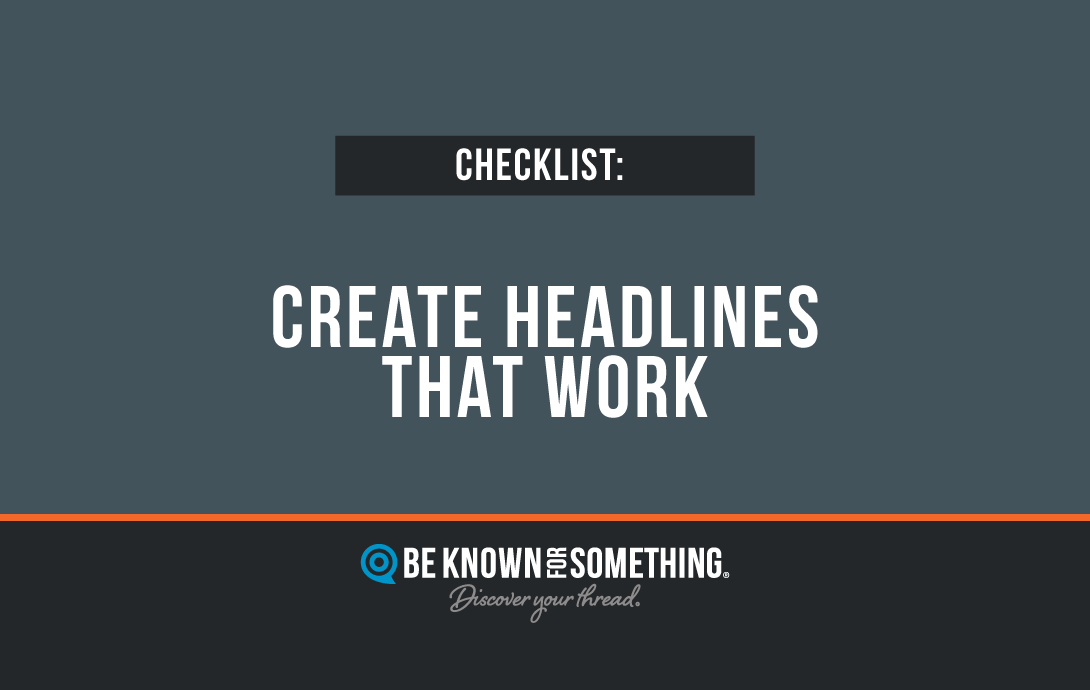Checklist: Create headlines that work (sermons, social, blogs)

Your job to create headlines that work is fairly clear but certainly not easy: put the right words together to describe your expanded content so it captures the interest of your audience.
But write a “wrong” headline and you’ll risk having your potential audience ignore the rest. And once an audience starts to ignore content, it’s more difficult to engage them again. That’s why you need to create headlines that work every time!
Therefore, here’s a checklist to ensure an audience pays attention to your sermons, social media posts, church blogs, newsletters, etc. Everywhere you need a great headline!
- Provide a solution or remind them of a need. To understand and love an audience means becoming their pain experts and wanting to provide the best solutions. Think about the needs, concerns, and goals that impact them daily. Talk about them authentically because you care. Or promise a solution.
- Create a strong connection between headline and content. Don’t clickbait them (bait and switch doesn’t feel good). Always ensure your content delivers what the headline promises.
- Use good keywords or key phrases. Think what your audience would be googling and use those words. Use a good keyword research tool if necessary. Once you identify the keyword or phrase, be sure to use it regularly throughout the content (i.e. this article’s key phrase is “create headlines that work”. Now count how many times it’s used in this article’s body).
- Create headlines that work by using active voice. Your audience wants practical knowledge. Most don’t want existential or philosophical discussion (unless it can be put into practice). Use active voice for verbs so the audience knows there’ll be steps to achieve their goal or solve their need.
- Keep it short; make it memorable. Once you create headlines that work by using the first four points, edit it to make it as short as possible. Brevity makes it easier to remember and provides a simple skeleton to hang all the content on.
- Unexpected will breakthrough. Don’t make it boring or it’ll get lost. Try to make it sound like the content they’ve never heard before. And information that’ll change their future. If not? It’s worth ignoring.
- Create headlines that work by implying “you have time for this”. Adding a number to your headline is the easiest way to do this. This article’s headline could’ve said “7 essentials to create headlines that work”, but “Checklist” also connotes itemized essentials too. Why is this important? Everyone feels like they don’t have time to do everything required of them, so you need to let them know you’re limiting the solutions to a manageable amount. That’ll help the audience think “I know the content’s outline will be organized and it’ll fit within my attention span”.
Want 25 Game-Changing Resolutions?
Related Posts

Christmas Church Communication Strategy: 3 Nativity Lessons
Christmas isn’t just another event on the calendar; it’s a strategic opportunity to communicate the Gospel to a world that’s

3 Church Leadership Skills That Transform Your Ministry
You didn’t accept a call to ministry just to maintain the status quo. You were called to lead to inspire,

How to Create a Church Marketing Strategy That Reaches Your Community
You’ve been called to lead a church that makes a difference in your city. That means developing a clear church


